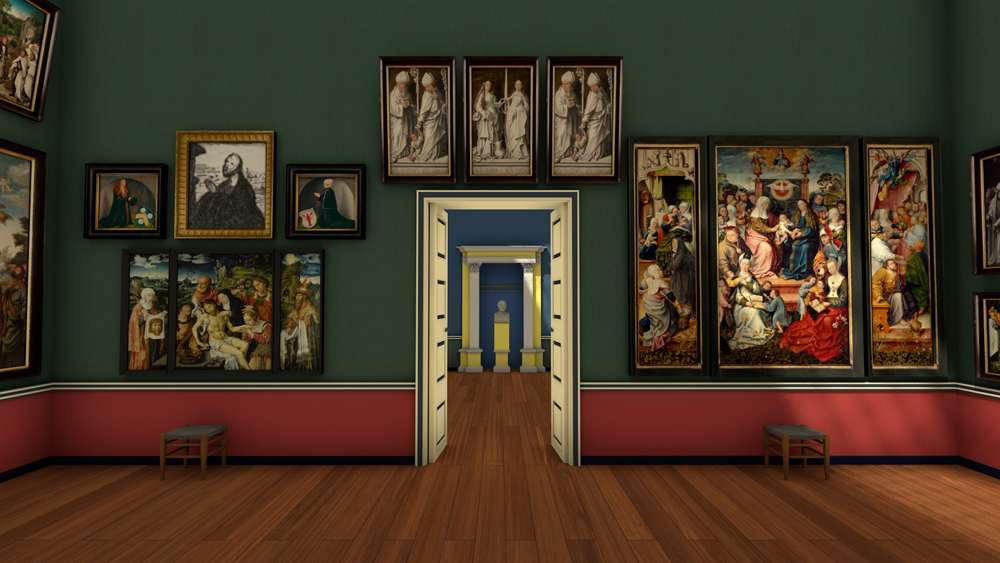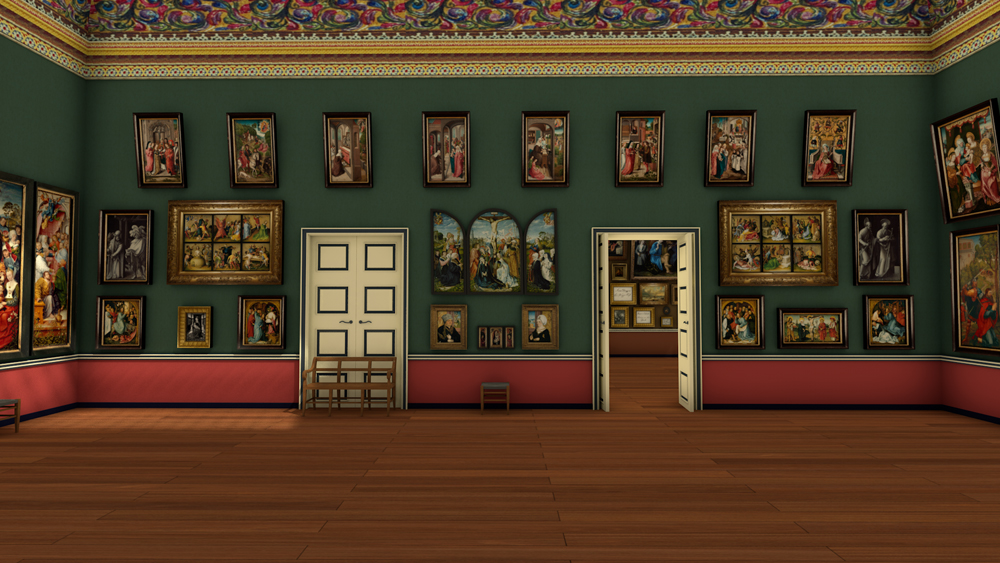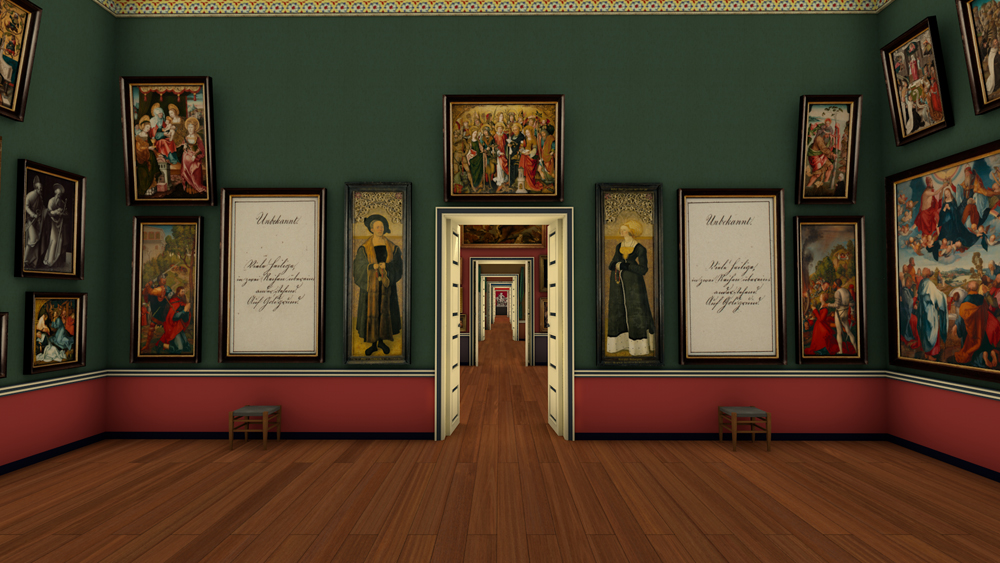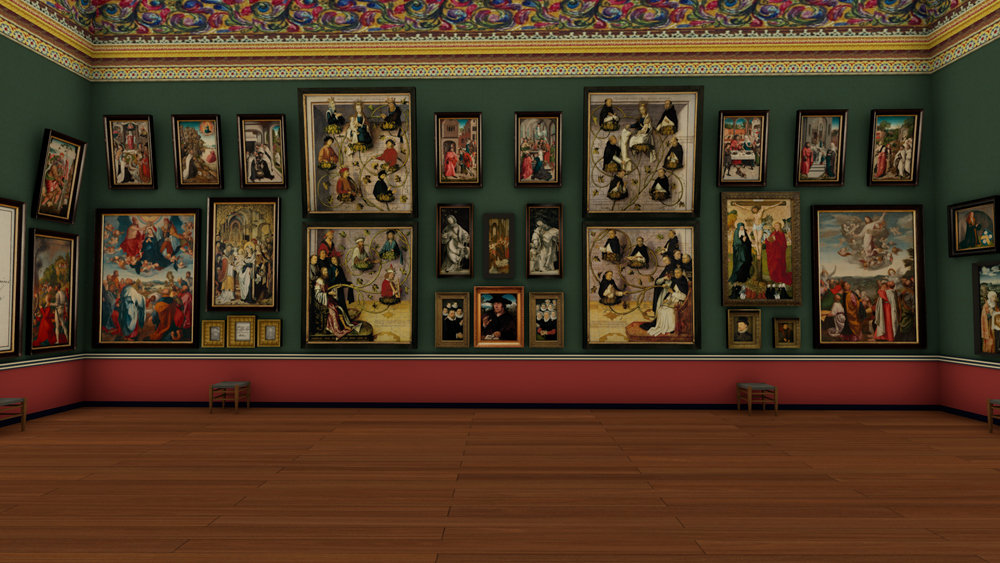1833 Early German room
Frankfurt
during the “German Middle Ages”
In 1833, the largest of the three skylight rooms of the painting gallery was dedicated to art of ca 1500. Most of the exhibited works came from Frankfurt churches and convents. Together with paintings that at the time were erroneously attributed to Jan van Eyck and Hans Holbein the Younger, these panels were incorporated in the national history of art of the “German Middle Ages”.
As a result of the Secularisation, decreed by Napoleon in 1803, the clerical institutions in Frankfurt had been disbanded. As a result, the important works of art, collected over centuries, had been left without a home. The Frankfurter Museumsgesellschaft (“Frankfurt Museum Society”), founded in 1808, formed the first safety net for these works. Already in 1822, the Society lent its altarpieces from the Dominican and Carmelite churches to the Städelsches Kunstinstitut.
Thus, visitors of the Early German room were not only presented with the monumental outer wings of the high altarpiece of the Frankfurt Dominican church, painted by Hans Holbein the Elder (inv.-no. HM 6-9, HM 17-20), but also with Albrecht Dürer’s and Matthias Grünewald’s retable painted for the Frankfurt wholesaler Jacob Heller (inv.-no. HM 36 and 37, and the panels today at the Historisches Museum Frankfurt, inv.-no. B 265-271). In both cases, the originally double-sided altar wings had been split in the eighteenth century, in order to present the respective scenes as single panels. The panels of the “Heller Altarpiece” were divided over the room’s four walls, as their original interrelation had been forgotten over time. On the east wall, the copy after Dürer’s lost central panel with the “Assumption of the Virgin” was displayed as a “counterpart” to Philipp Uffenbach’s “Ascension of Christ”, painted almost a century later (today both at the Historisches Museum Frankfurt, inv.-no. B 265, B 303).
Also prominently displayed were two altarpieces by the so-called “Master of Frankfurt”, active around 1500 in Antwerp, but during the nineteenth century thought to have been a local artist. This misconception was based on the Frankfurt provenance of the ensembles: the “Altarpiece of St Anne” came from the Dominican church (today at the Historisches Museum Frankfurt, inv.-no. B 259-261), while the “Crucifixion Altarpiece”, originally painted for the Frankfurt Humbracht family (inv.-no. 715), came from the Barfüßerkirche (“Church of the Discalced Friars”), the predecessor of St Paul’s Church demolished in 1786.
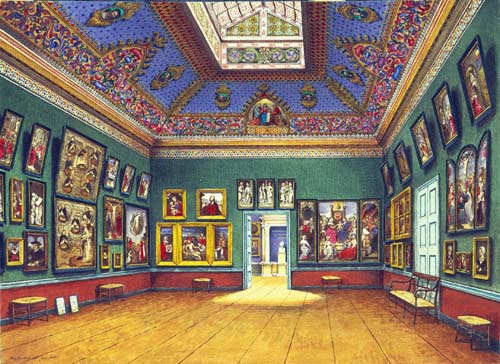
Decoration
The Unification of the Arts
In the room immediately to the west, which in 1833 had not yet been opened to the public, director Philipp Veit would be painting “Christianity Introducing the Arts in Germany” until 1836 (inv.-no. 1114).
In anticipation of this monumental work, Veit had designed the ceiling painting above the entrance of the Early German room. It showed “Art, newly awakening over the ruins of antique art after the night of barbarism, thanks to the influence of religion” (Directory of 1835, p. 53). The personification of Art reminded not by chance of the woman in Dürer’s “Melencolia”. An “angel annunciate” points her towards the morning star in heaven, while she is inspired by the flames of the Holy Spirit.
Depicted on the opposite side, leading to the Italian room, was an idealisation of the Middle Ages that at the same time showed the ideal of a tripartite art school: “The Unification of Painting, Architecture and Sculpture”. In front of Architecture, the Arts were depicted standing in a divine light – “as if they were Christian Graces”, as an admirer noted (Kunst-Blatt 1834, p. 83).
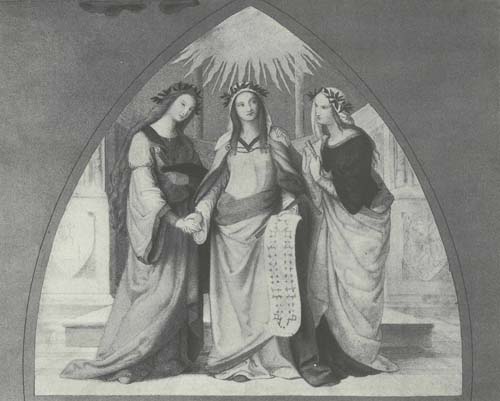
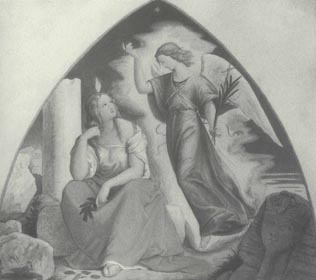
The twelve portrait cartouches on the ceiling, showing masters in all the disciplines, corresponded with this notion as well: visible above the entrance coming from the Dutch and Flemish room were presumably the architects Erwin von Steinbach and Anton Pilgrim, while the sculptors Peter Vischer and Adam Kraft were depicted to the left. Clockwise, these were followed by the most important German and Netherlandish masters. After Cranach and Schongauer, the most prominent spots, above the entrance to the Italian room, were reserved for Albrecht Dürer and Jan van Eyck. Depicted to their right were “Master Wilhelm” (Stefan Lochner), Jan van Scorel, Hans Holbein, and “Hans Hemmelink” (Memling).



